Gensler unveils skyscraper design for site of Calatrava's ill-fated Chicago Spire
Global firm Gensler has proposed an alternative skyscraper concept for the waterfront site in Chicago where a spiralling, supertall condominium tower by Spanish architect Santiago Calatrava was slated to rise.
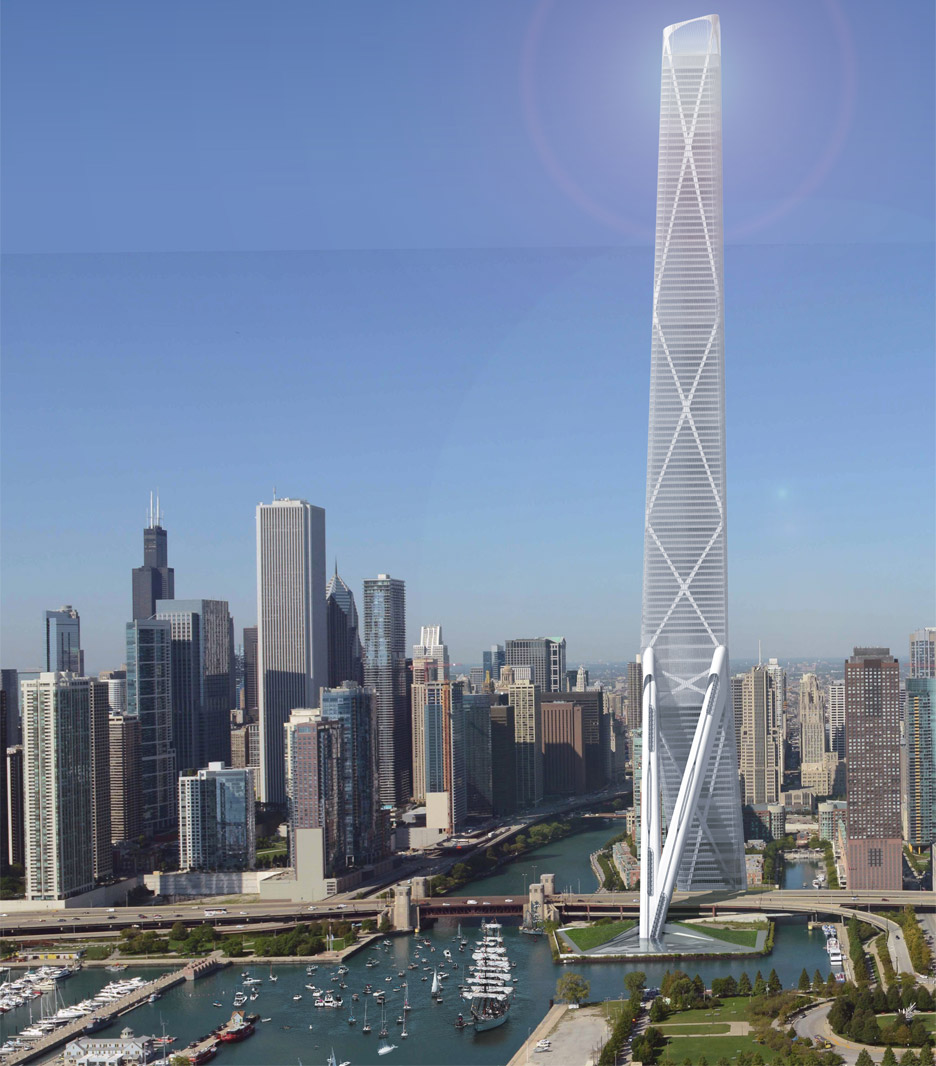
For the recent conceptual proposal, Gensler asked: "How do you succeed with a $50 million dollar failure?" – referencing the money spent on constructing the Calatrava-designed Chicago Spire before work was halted.
Construction of the Spire began in 2007 and stopped the following year as the global financial crisis hit. The 150-storey tower was intended to contain condominiums. Today, a 110-foot diameter (34-metre) hole remains at the site – an example of the "lack of demand" that the city's architecture scene is experiencing.
However, Gensler has proposed a new supertall skyscraper called Gateway Tower for the site. The building would house a mixed-use program, with condos, rental apartments, two hotels and tourist attractions.
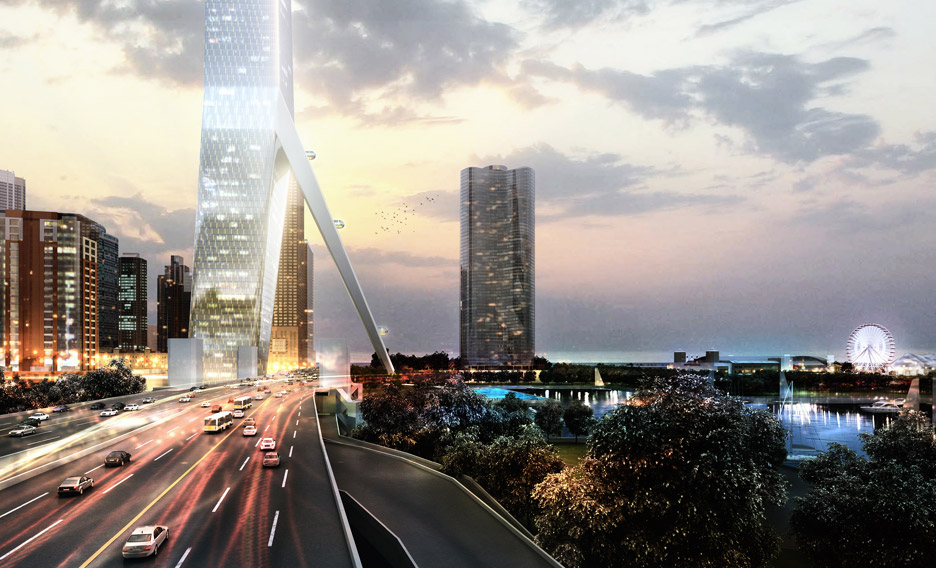
Having a mixed program would also help attract and retain investors, the firm said.
"Projected demand in the Chicago market is for a more diverse program, as well as a wide and inclusive range of experiences and commercial opportunities," said Gensler. "Diverse revenue streams hedge against market cycles and unexpected macro-economic demand shock."
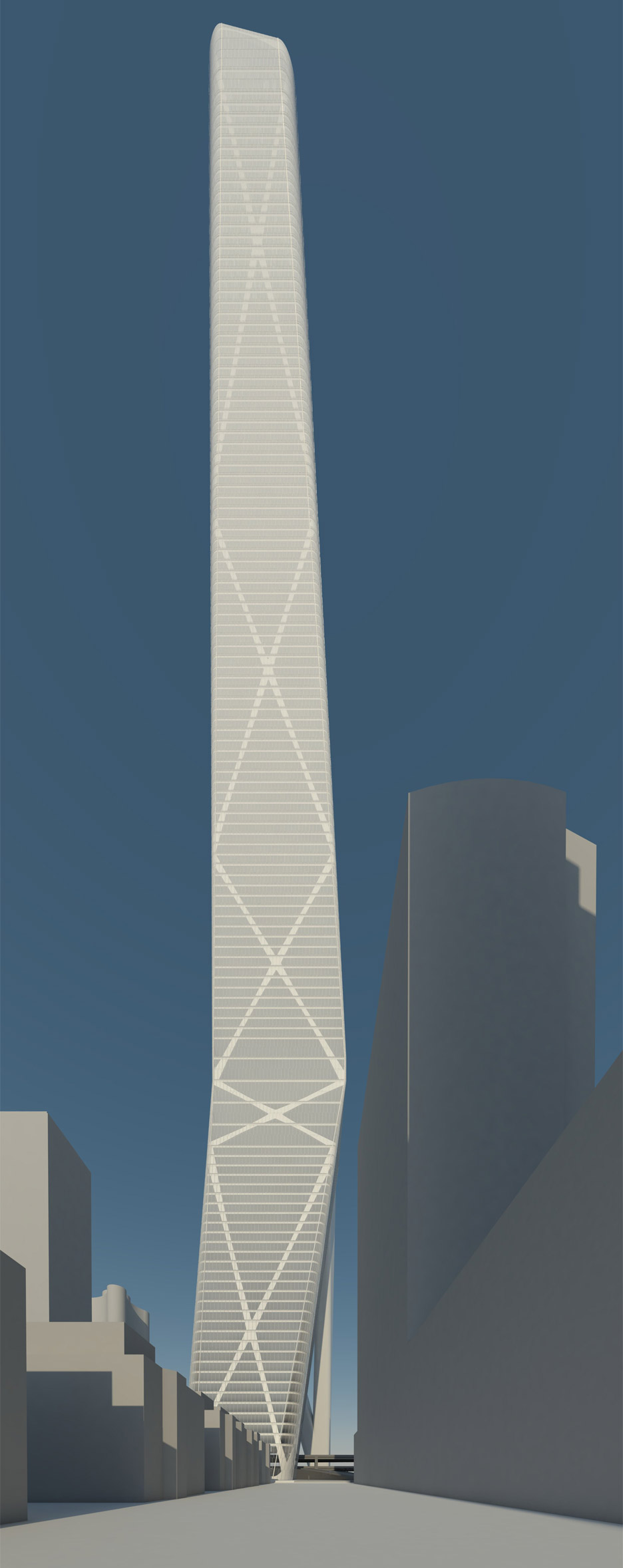
The conceptual tower is the same height as the Spire – 2,000 feet (610 metres) – but does away with the twisting shape.
Instead, Gensler has conceived a thin, rectilinear tower that bends slightly as it approaches the ground. A large, supporting brace splays outward from the lower portion of building towards Lake Michigan.
The exterior of the glass skyscraper would feature X-bracing, similar to the iconic John Hancock Center by Skidmore, Owings & Merrill in the city.
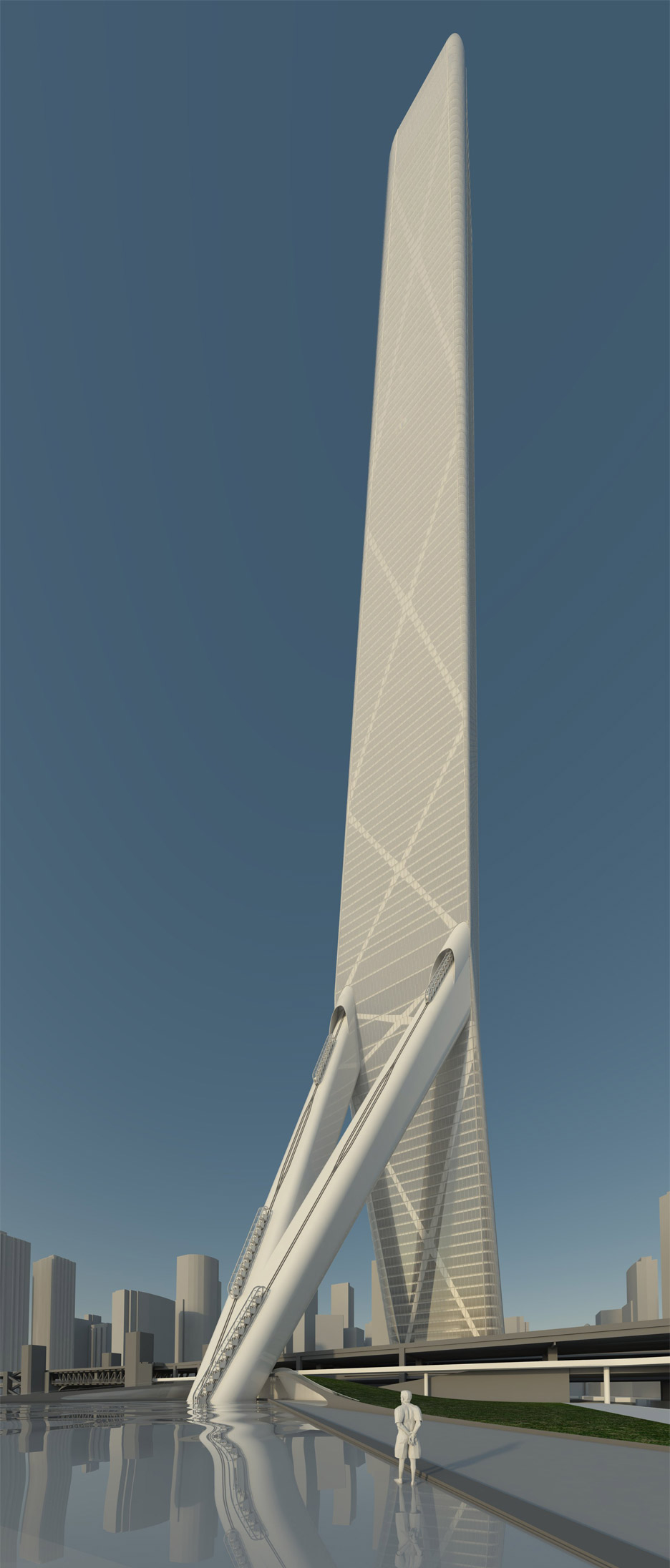
The design is intended to offer a strong connection to the city, lakefront and Chicago Riverwalk – in turn enabling the tower to capitalise on the city's tourism dollars.
More than 50 million people visited Chicago in 2014, generating $13.7 billion (£9.4 billion) in direct spending, according to Gensler.
"Our solution was to create an anti-tower, one that was not designed purely as an object to look at but rather one that is engaging at different scales to the entire city, one that would welcome newcomers as it simultaneously embraces locals," Gensler principal Brian Vitale told Curbed.
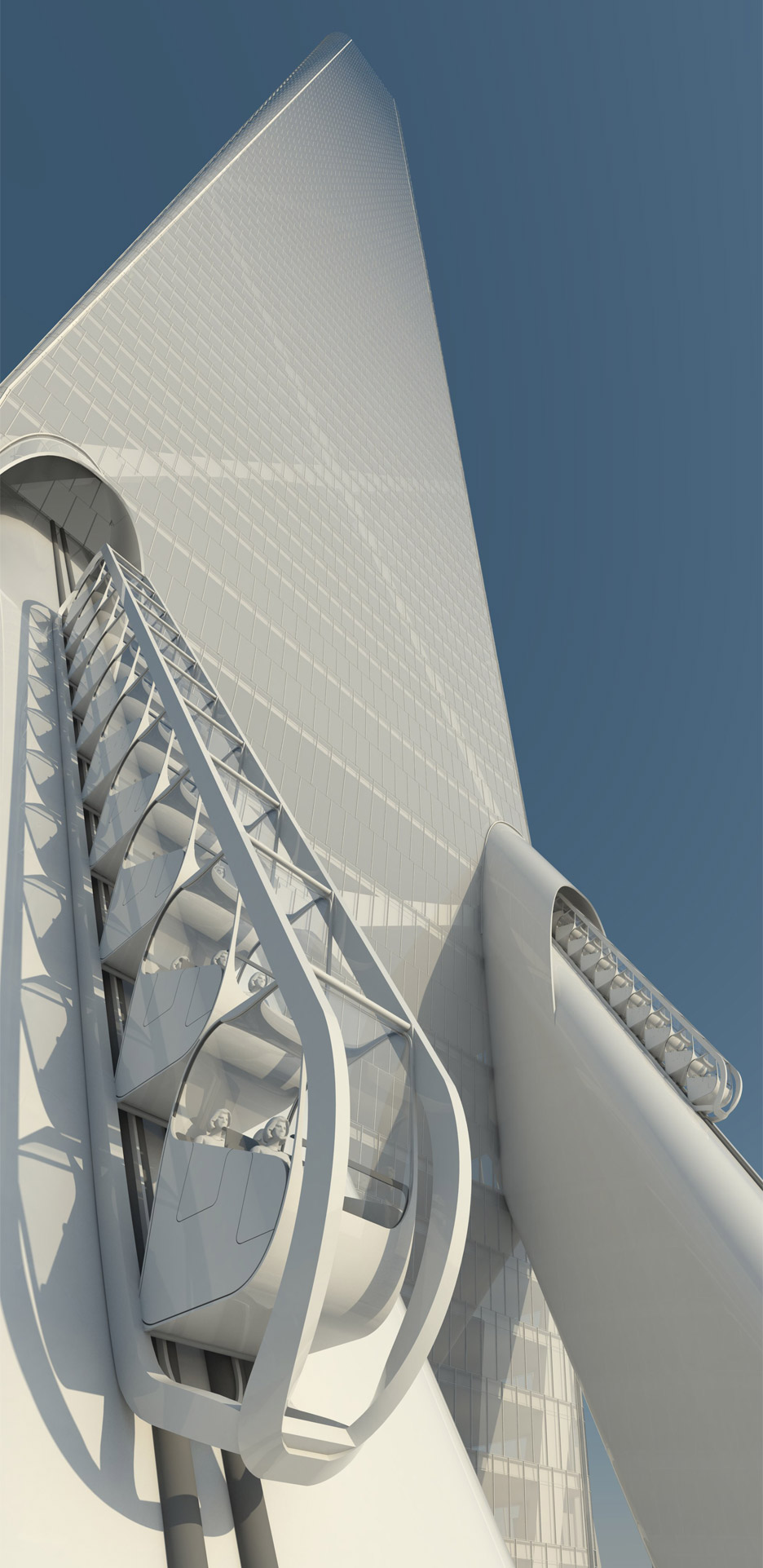
The proposal features amenities such as water taxi service, two entries to the Riverwalk and a skydeck that would offer "unparalleled views and premium experiences including a restaurant and sky garden".
It also includes a funicular that would transport visitors from the ground to mid-level amenities.
Gensler emphasised that the building's supertall height is necessary in order to draw tourists to the skydeck. It used the observatory at New York's Empire State Building, which collected $92 million (£64 million) in 2012, as a reference. The attraction reportedly generates more revenue than rent from all of the building's office tenants.

Gensler's plan, which won an internal, company-wide competition, is purely conceptual at this stage.
Specific plans for the Chicago Spire site "remain a mystery," according to Curbed.
Other schemes proposed for Chicago include an aerial gondola that would stretch over the city and a museum by MAD dedicated to film director George Lucas. New skyscrapers underway in the city include the supertall Vista Tower by Studio Gang, which features a trio of connected towers arranged in a row.
Calatrava's office declined to comment when contacted by Dezeen.